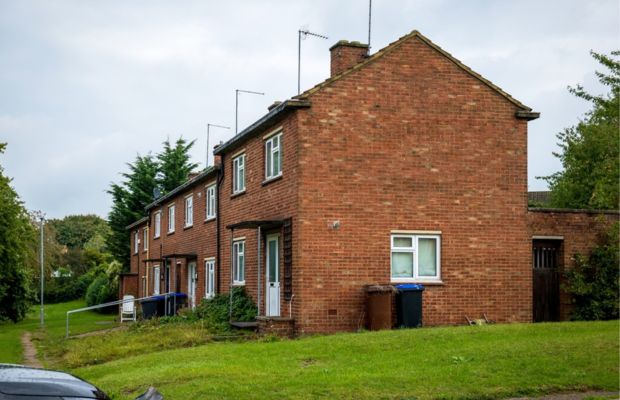Buying a home isn’t simply a case of transferring money and collecting the keys – there’s a huge amount of legal work involved, too.
Often, it’s that legal work that can slow down your move, so knowing how you can help speed up the conveyancing process could mean you receiving the keys to your dream home much sooner.
What is conveyancing?
Conveyancing is the legal process that sees the transfer of a property from one owner to another.
It sounds simple enough, but the work involved can be substantial and complicated and this can sometimes result in delays.
Do I need a conveyancer to sell a house?
In order to sell your home, you’ll need a licensed conveyancer or solicitor to do the legal work on your side of the transaction.
What does a conveyancer do?
Your conveyancer will undertake a large amount of administrative and legal work in order to make your property sale and / or purchase legally watertight.
If you’re buying a property, your conveyancer should:
- Confirm their role by sending you their terms of business and fixed fee costs
- Contact the seller’s solicitor to receive the contract pack
- Raise any queries about the contract pack with the seller’s solicitor
- Carry out all necessary searches
- Obtain a copy of your mortgage offer
- Present the results of searches and the contract pack to you
- Make arrangements for your deposit to be paid
- Formally exchange contracts with the seller’s solicitor
- Prepare a draft transfer deed and completion statement
- Apply to your mortgage lender for release of funds
- Send all purchase funds to the seller’s solicitor
- Send stamp duty to HMRC
- Register the property in your name at the Land Registry
How long does conveyancing take?
The process of conveyancing starts when you instruct your solicitor or conveyancer and finishes when your property purchase or sale is complete.
That process usually takes around 8 to 12 weeks on average but can take longer. Equally, if you’re buying a property with no chain and everything is straightforward, the process can be quicker.
How long do conveyancing searches take?
Your conveyancer will instruct a number of searches on your behalf.
Searches can take anything from a few days to several weeks and even months in more severe cases.
How long your searches take will largely depend on the kind of backlog your local authority is facing.
Searches provide huge amounts of information on your property, the land it sits on and the local area.
The three main searches your conveyancer will carry out are:
- Local Authority searches
- Environmental searches
- Water and drainage searches
Local Authority searches
These will highlight any planning issues or building control problems attached to your property that could affect its value.
Local Authority searches can also reveal issues with roads and pollution, as well any planning applications related to nearby land that could affect your property
Environmental searches
Environmental searches will flag any potential flooding problems, land contamination or issues with subsidence that could affect your property.
Water and drainage searches
These searches will confirm who owns and maintains drains, pipework and sewer systems and whether your property is connected to a public sewer and water supply.
Other searches
Other searches your conveyancer may carry out include:
- Chancel repair search
- Bankruptcy search
- Title searches
- Land Registry priority searches
Speed up conveyancing: Things you can do
While conveyancing timeframes average eight to 12 weeks from instruction to completion, many buyers and sellers find things can take much longer.
However, there are steps you can take to speed up the conveyancing phase and get your hands on the keys to your new home faster.
1. Instruct your conveyancer and lender as early as possible
Planning ahead can help you get in your new home quicker.
Before setting out on your search for a property:
- Get an Agreement in Principle (AIP) from your chosen lender
- Appoint a conveyancer as soon as your offer is accepted and ensure they are on your lender’s approved panel
2. Buy or sell at auction
One sure-fire way to speed up your conveyancing is to buy or sell at auction.
Under the Traditional Method of auction, the buyer and seller exchange contracts immediately and then have 28 days to complete the sale.
With the Modern Method, the buyer pays a non-refundable reservation fee when their bid is accepted and then both sides have 56 days to exchange contracts and complete the sale, which is still much quicker than most standard property transactions.
3. Sort out all your documentation early
If you’re selling a property, ensure you have all documentation easily to hand as soon as you put your home on the market.
Your buyer’s conveyancer will need:
- An up-to-date Energy Performance Certificate (EPC)
- Planning permission and building regulations approval for any work you have had done
- Building warranties or an NHBC certificate if you bought your home as a new build
4. Complete everything quickly and efficiently
Once you have appointed your conveyancer, request that they send out their initial documentation to you right away.
You’ll need to send back proof of identification and a host of other documentation, so do this as quickly as you can to keep the process moving.
You should also contact the seller’s estate agent and provide your conveyancer’s details to them, as well as your own agent if you’re selling.
Remember to check with your conveyancer that they have everything they need to proceed and raise any queries with them right away.
When enquiries are raised by your conveyancer that require your input, respond promptly.
5. Don’t delay if issues arise
The conveyancing process can sometimes throw up issues with your new property.
These issues could include:
- Problems with your survey results
- Concerns raised by searches
Seek further advice if anything is a major concern, but always take decisive action so as not to cause a big delay.
6. Communicate well
Once you’ve appointed your conveyancer, outline your preferred method of communication to them.
If you prefer email to phone calls, perhaps because of work commitments that mean you’re unable to answer the phone, let them know.
Scan and email documentation to your solicitor wherever possible, rather than relying on post.
Finally, if your conveyancer appears to be dragging their heels, don’t be afraid to chase them. You could also bring in your estate agent here, as conveyancing delays can often be solved by making use of a proactive agent.




